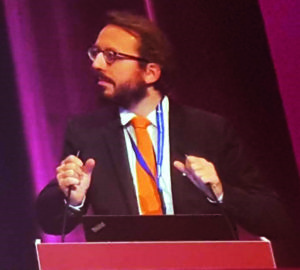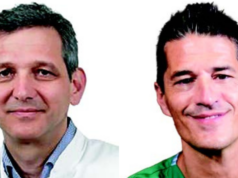
The lessons learned from a recent research article were outlined in a presentation by interventional radiologist Maxime Ronot (Beaujon University Hospital, Paris, France) at the European Conference on Interventional Oncology (ECIO; 8–11 April, Amsterdam, The Netherlands). The article under scrutiny was ‘Development of a prognostic score for recommended TACE candidates with hepatocellular carcinoma: a multicentre observational study’, which was published by Wang et al in the Journal of Hepatology in 2019.
Transarterial chemoembolization (TACE) is the standard of care for patients with Barcelona Clinic Liver Cancer (BCLC) intermediate stage B hepatocellular carcinoma (HCC) and for patients with unresectable BCLC stage A HCC. It can also be used as a bridge before liver transplant.
When attempting to predict patient outcomes after TACE, Ronot reported, “individual factors have been described in many research papers as predictive of response to TACE, whether favourable or not, such as the size of the tumour, the number and location of lesions, and the way the tumour is enhanced or not after contrast injection.
“You can also find many studies that try to include features and parameters about liver function or the status of the patient, and you end up with a lot of prognostic models with a lot of prognostic systems, and it is very hard to know which ones we should use, and how, and in which context,” he continued.
Ronot also noted that, “most of these prognostic models have been described and derived from small series and from monocentric studies, and they lack external validation. Many are also derived from cohorts of patients receiving TACE in a broader setting beyond the usual recommendations. This is where this paper comes in.”
In their study, Wang et al included patients receiving conventional TACE for HCC from 24 tertiary Chinese centres. They used strict inclusion criteria so their target population was made up of “recommended” or “ideal” candidates of TACE who were treatmentnaïve, had well preserved liver function with a Child-Pugh score of A5-B7 and had at least one measurable lesion >1cm.
They screened 3,810 patients for eligibility. After exclusions, a total of 1,604 patients (87% male; 85% with hepatitis B virus) were randomised into training (n=807) and validation (n=797) cohorts in the study.
“The authors’ first message,” said Ronot, “was that the patients’ median overall survival was rather high at more than 32 months and they explained that this was because of the strict inclusion/ exclusion criteria.”
They produced two different models to see which was better at predicting patients’ overall survival: one with a simple addition of tumour size and number and a second which used an adjusted tumour size and number and included alpha-fetoprotein. Ronot stated that “the second model was not significantly better than the first model so they chose to stick with the first model.
“The researchers proposed new criteria: the six–12 criteria, which we could use to stratify patients into three strata: the sum of the largest tumour and the number of tumours will be lower than six, between six and 12 or larger than 12. They showed how this could stratify in terms of patients’ overall survival in the derivation and validation cohorts,” he explained.
They then compared the performance and discriminative ability of this model with existing models. Ronot described how “for every scenario they found the accuracy of their model was higher, at the upper range of the discriminatory ability of all the models.”
They also provided “a nice easy numbergram where you can plot the probability of one-, two- and three-year survival, as well as median survival, using the six–12 criteria. This is very useful and very easy to do.”
Ronot outlined the strengths of the study, “which is clearly multicentric, as the data were from 24 centres, it has a clear endpoint of overall survival which is easy to understand, there is validation, the model was compared with other models and the model gives a continuous result.” He also noted some limitations: “As an observational study, the risk of bias is not completely absent, there was a high rate of HBV, as is common in Asia, and they did not look at the way treatment response reacted and changed with this model.”
Ronot concluded that some important points can be taken from this study, “It underlines the importance of tumour burden that we frequently observe in HCC. It has demonstrated that survival can be quite long for patients at intermediate stage or with unresectable tumours—close to 33 months’ overall median survival is interesting. But most important for interventional radiologists, when I read this paper, I realised there was room for wide differences in the type of drug and dose used, whether gelatine sponge or polyvinyl alcohol foam particles were introduced, how tumour feeding vessels were embolized and so it is hard to believe that these differences will not have an impact on patient survival or response. I therefore believe that we need to start collectively working on a standardisation about the way we report procedures and the way we do the procedures.”













